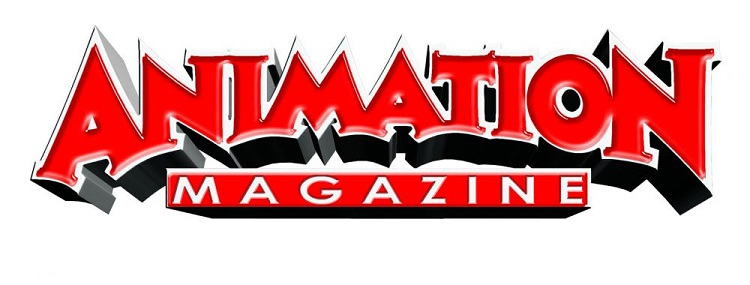Does Animation magazine Really Live up to the Hype?

Animation Magazine is a fascinating art form that has captured the hearts of people for generations. From the early days of hand-drawn animation to the modern era of computer-generated imagery, animation has evolved into a complex and sophisticated medium that continues to push boundaries and captivate audiences around the world. In this article, we will explore the history of animation, the different types of animation, the tools used by animators, and the process involved in creating an animated film. We will also take a look at where animation is headed in the future and what we can expect from this exciting and ever-evolving industry. So sit back, relax, and join us on a journey through the wonderful world of animation.
The History of Animation
Animation has a rich and fascinating history that dates back to the early 1900s. It all began with simple drawings on paper, which were then photographed and projected onto a screen to create the illusion of movement. The first animated film was created by French artist Émile Cohl in 1908, titled “Fantasmagorie”. This short film featured hand-drawn characters moving across the screen in a series of comical scenes.
Over the years, animation evolved and grew more complex. In the 1920s, Walt Disney introduced synchronized sound to his animated films, revolutionizing the industry. The 1930s saw the rise of full-length animated feature films, with Disney’s “Snow White and the Seven Dwarfs” becoming a massive success in 1937. In the following decades, animation continued to evolve with new techniques such as stop-motion animation and computer-generated imagery (CGI).
Today, the animation is a thriving industry that encompasses everything from television shows to blockbuster movies. Its history is rich with innovation and creativity, and it continues to captivate audiences around the world.
The Different Types of Animation
When it comes to animation, there are a variety of different techniques and styles that animators can use to bring their creations to life. One of the most popular forms of animation is traditional hand-drawn animation, which involves creating each frame by hand on paper or using digital tools. This technique has been used for decades and is still widely used today, particularly in television shows and feature films.
Another popular form of animation is stop-motion animation, which involves taking a series of photographs of physical objects or puppets and then playing them back in sequence to create the illusion of movement. This technique has been used in classic films like “King Kong” and “The Nightmare Before Christmas,” as well as more recent productions like “Isle of Dogs.”
Computer-generated imagery (CGI) is another type of animation that has become increasingly popular in recent years. This technique involves creating 3D models on a computer and then animating them using specialized software. CGI has been used extensively in blockbuster movies like “Avatar” and “The Avengers,” as well as in video games and other interactive media.
Overall, there are many different types of animation that artists can use to bring their visions to life. Each technique offers its own unique advantages and challenges, making it important for animators to choose the right approach for each project they undertake.
The Tools of the Trade
As an animator, having the right tools is crucial to creating high-quality animations. One of the most important tools for animators is a powerful computer with specialized software such as Adobe Animate, Toon Boom Harmony or Autodesk Maya. These software programs allow animators to create and manipulate characters, backgrounds, and special effects with ease.
In addition to software, other essential tools include a drawing tablet and stylus for creating digital drawings, a scanner for importing hand-drawn artwork into the computer, and a graphics tablet for precise control over digital painting and coloring. A good quality microphone is also necessary for recording voiceovers and sound effects.
Finally, having access to online resources such as tutorials and forums can be invaluable in improving skills and staying up-to-date with industry trends. With the right tools at their disposal, animators can bring their creative visions to life on screen.
The Making of an Animated Film
Creating an animated film is a complex and time-consuming process that requires the collaboration of many talented individuals. The first step in making an animated film is developing a concept or story idea. This can be done by a writer, director, or producer who will work with the creative team to develop a script and storyboard.
Once the story is finalized, the animation process begins. This involves creating character designs, backgrounds, and other visual elements that will be used throughout the film. Animators use specialized software to create movement and bring characters to life on screen.
Sound design is also an important aspect of creating an animated film. Sound effects and music are added to enhance the overall experience for viewers. Voice actors are often hired to provide dialogue for characters.
The final step in making an animated film in post-production. This involves editing, color grading, and adding special effects to create a polished final product. The result is a visually stunning and entertaining piece of art that can be enjoyed by audiences of all ages.
The Future of Animation
As we look toward the future of animation, it’s clear that technology will continue to play a major role in shaping the industry. With advancements in virtual reality and augmented reality, animators will have even more tools at their disposal to create immersive and interactive experiences for audiences.
Additionally, as streaming services like Netflix and Amazon continue to invest in original animated content, we can expect to see more diverse stories and styles being produced. This means that there will be more opportunities for up-and-coming animators to showcase their talents and bring fresh perspectives to the medium.
However, with this increased accessibility comes the challenge of standing out in an increasingly crowded market. Animators will need to find ways to differentiate themselves and create unique content that resonates with audiences. Ultimately, the future of animation is bright, but it will require creativity, innovation, and adaptability from those working within the industry.
Conclusion
In conclusion, Animation Magazine is a fascinating and ever-evolving art form that has captured the hearts of audiences for over a century. From its humble beginnings as simple hand-drawn cartoons to the complex computer-generated imagery we see today, animation has come a long way. With the advent of new technologies and techniques, animators have more tools at their disposal than ever before, allowing them to create even more stunning and immersive worlds. As we look toward the future of animation, it’s clear that this art form will continue to push boundaries and captivate audiences for generations to come. Whether you’re an aspiring animator or simply a fan of animated films and shows, there’s never been a better time to dive into the world of animation.






